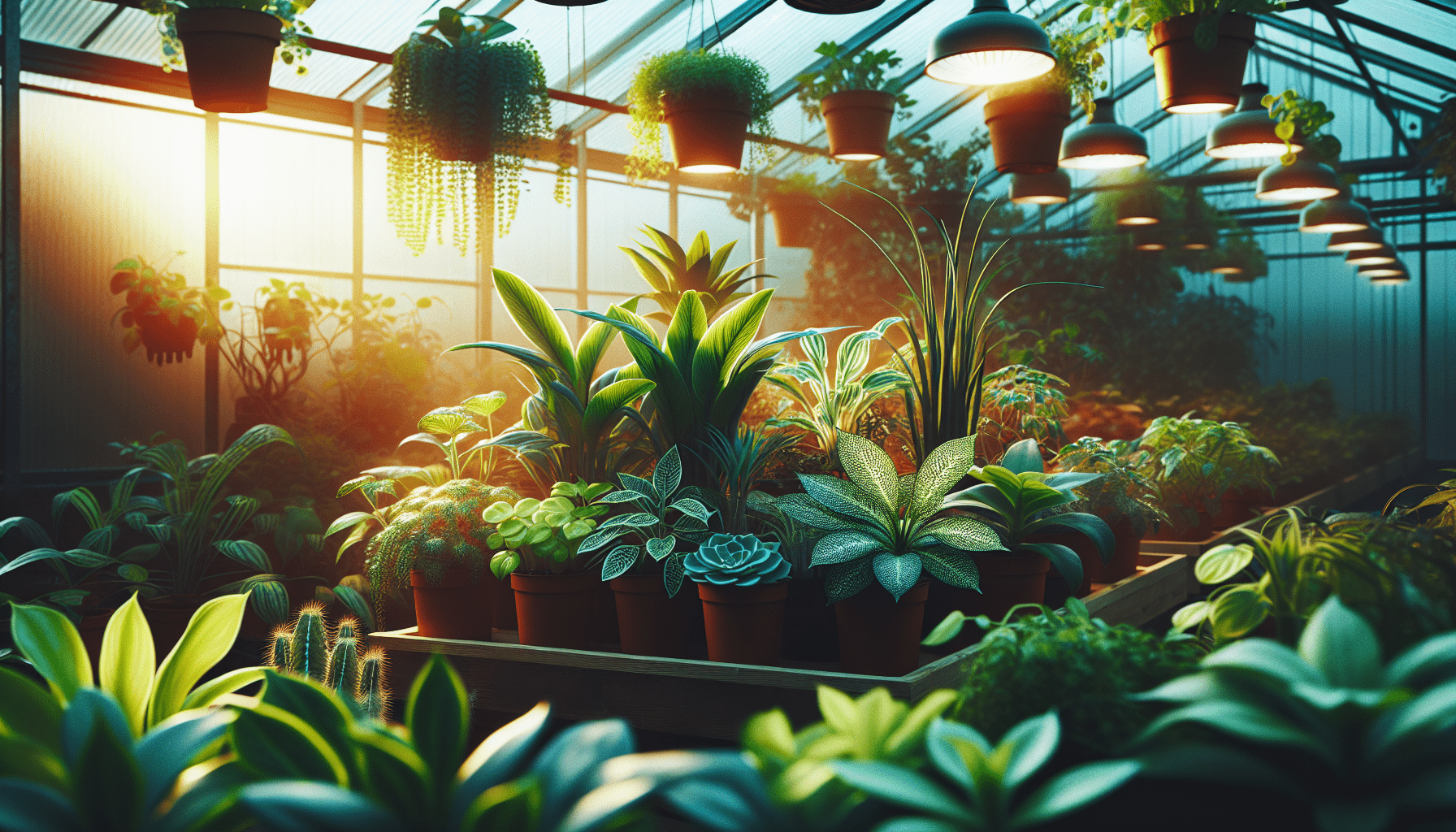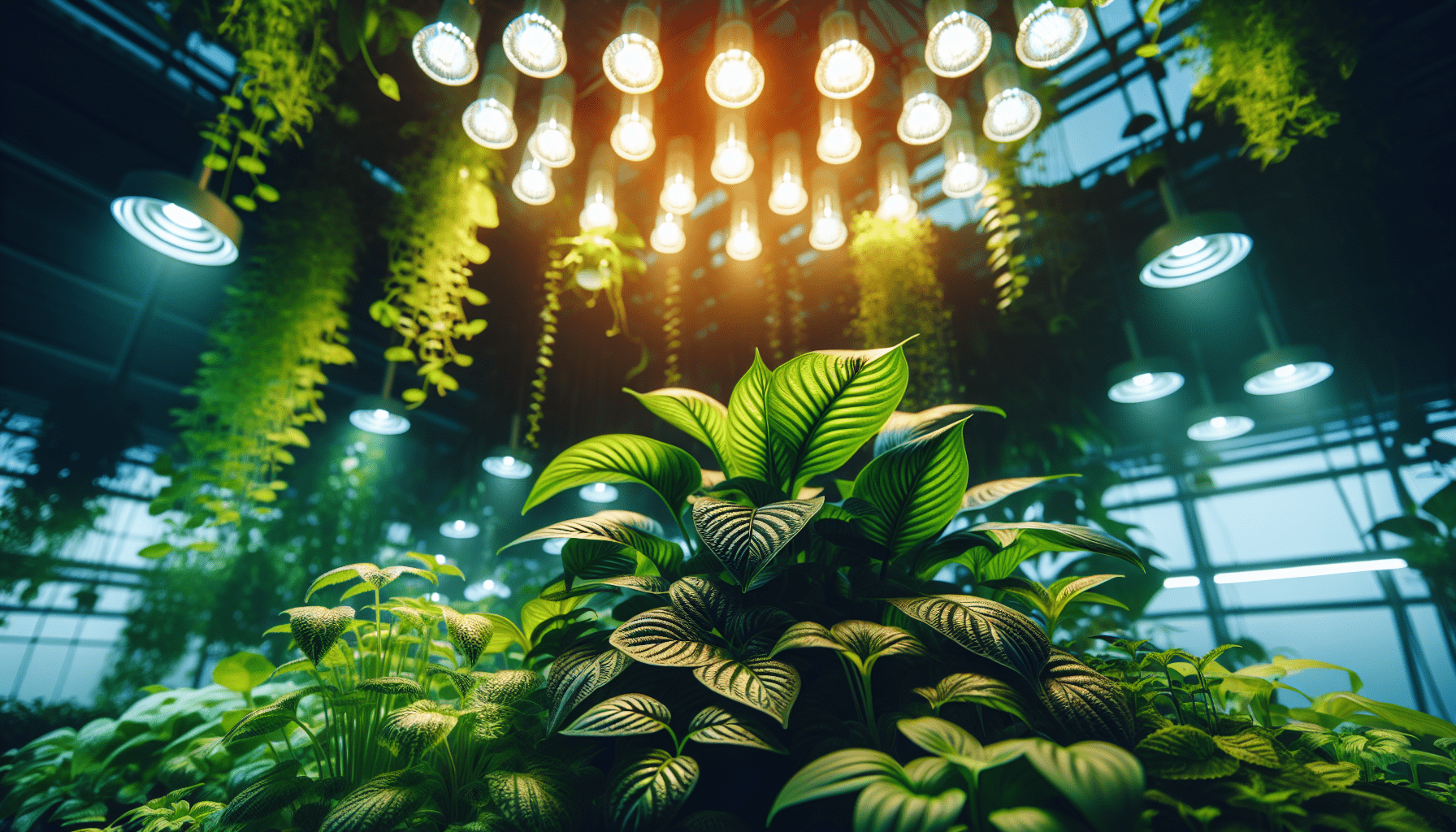
Venture into the vibrant world of Indoor Greenhouse Gardening with this ultimate guide designed especially for beginners. This comprehensive manual is tailored to empower you with everything needed to navigate through the nuances of indoor greenhouse farming. Equipped with the best tips, tricks, and practical guidelines; from understanding plant needs to dealing with pests, it aims to make your gardening journey as enriching as possible. Start nurturing your own indoor green sanctuary right from the comfort of your home, one plant at a time.
Understanding Indoor Greenhouse Gardening
Indoor greenhouse gardening is a practice that involves growing plants within your home or other indoor spaces. It provides a controlled environment that enables plants to flourish regardless of outdoor weather conditions. This versatile gardening method harnesses artificial lighting and temperature control to create the perfect conditions for various plant species.
Definition and basic concepts
At its core, indoor greenhouse gardening refers to leveraging controlled environments, either in part of your home or inside a specifically designed structure, to grow plants. The basic concepts you’ll need to grasp include lighting, irrigation, temperature control, and understanding different plant needs.
Benefits of indoor greenhouse gardening
Indoor greenhouse gardening offers numerous benefits. It allows for year-round gardening, unaffected by outside weather. With precise control of conditions, it can produce higher yields and decrease plant disease and pest risks. Moreover, it’s an excellent way to use indoor spaces creatively and can serve as a therapeutic hobby.
Common misconceptions clarified
Contrary to common belief, indoor greenhouse gardening does not need to be overwhelmingly technical or costly. While it does require an understanding of certain environmental parameters, most of this knowledge is easily accessible and straightforward. Additionally, while initial setup costs can vary, once established, indoor greenhouses are cost-effective given their year-round productivity.
Choosing the Right Location
Factors to consider for location
Choosing the right location inside your house depends on several factors. Space availability is a factor; more space provides an opportunity to grow a larger variety of plants. Accessibility for maintenance, proximity to a water source, and safety from pets or small children are other considerations.
Lighting requirements
Attention to light is crucial for indoor greenhouses, as different plants have various light requirements for optimal growth. Some plants require full sunlight while others thrive in partial shade. Therefore, your indoor greenhouse should ideally be located near windows that receive plenty of sunlight. Alternatively, you can use artificial grow lights.
Temperature and humidity control
Temperature and humidity control are likewise essential aspects of indoor greenhouse gardening. Most plants thrive in temperatures between 65 and 75 degrees Fahrenheit, and a humidity level of around 50%. It’s a good idea to pick a location where you can control these factors easily.

Types of Indoor Greenhouses
Mini greenhouses
Mini greenhouses are a good choice for beginners and those with limited space. They can sit on a tabletop or take the form of small standalone structures. Mini greenhouses are perfect for starting seedlings or growing just a few plants.
Cold frames inside
Cold frames, typically used outdoors to protect plants from cold winds and frosts, can also be utilised indoors. Indoor cold frames, given the consistent temperature control, are excellent for germinating seeds and growing vegetables.
Lean-to greenhouses for interior use
A lean-to greenhouse is an attached greenhouse, which is connected to your home. It uses the existing wall to save on building materials and heating costs. It can offer more space than mini greenhouses and lets you grow larger plants or more varieties.
Comparing costs and benefits
When selecting the type of indoor greenhouse, consider both the costs and benefits. While a lean-to greenhouse may offer more space and grow more plants, it also needs a bigger investment upfront in construction and possibly in heating and cooling. A mini greenhouse, on the other hand, is affordable and easy to start with but has limited capacity.
Essential Equipment and Supplies
Shelving units and grow lights
When setting up your indoor greenhouse, consider sturdy shelving units for space efficiency. Grow lights are a must for areas with not enough natural light or for plants requiring more light exposure.
Temperature and humidity monitors
Invest in reliable temperature and humidity monitors to keep track of your greenhouse conditions. These factors are vital to manage for the healthy growth of your plants.
Irrigation and misting systems
Depending on the size of your greenhouse, you may need to consider an irrigation system to ensure consistent watering. Misting systems can help maintain the ideal humidity levels without over-watering your plants.
Soil and fertilizers
Pick high-quality soil suited for the types of plants you intend to cultivate. Various fertilizers are available to supplement soil nutrients and boost your plant’s growth and yield.

Selecting Your Plants
Best plants for beginners
If you’re new to greenhouse gardening, start with sturdy and easy-to-care-for plants. Herbs like mint or basil, vegetables like lettuce, and plants like succulents are great starters. They’re not too demanding in terms of care and can withstand minor beginner’s mistakes.
Understanding plant needs
Different plants have unique needs in terms of light, water, temperature, and nutrients. Before growing any plant, research about its specific requirements and plan your greenhouse accordingly.
Seasonal considerations for indoor greenhouse gardening
While indoor greenhouses allow gardening year-round, your choice of plants can still be influenced by seasons, primarily due to varying light intensities and day length. For instance, some vegetables can be started in the late winter for early spring yield.
Seeding and Transplanting
Starting seeds indoors
Starting seeds indoors facilitates plant growth by providing a controlled environment. Start with moist, well-drained soil. Place a few seeds on top, cover lightly, and ensure that the soil stays moist until germination.
Transplanting seedlings
Once your seedlings have grown a few sets of leaves, they can be moved into their permanent pots. Be gentle during the process to avoid damaging the delicate roots.
Spacing and depth for optimal growth
Remember to space your plants well for proper air circulation and growth. Planting depth, too, is crucial – not too deep, not too shallow – the rule of thumb is to plant two times as deep as the diameter of the seed.
Maintenance and Care
Regular watering
Indoor greenhouses can dry out faster than outdoor gardens, so regular watering is essential. However, be careful not to over-water, as it can lead to root rot and other fungal diseases.
Pruning and pest control
Prune your plants regularly to maintain their shape and health. Watch out for common pests like aphids and spider mites, which can be controlled through manual removal or the use of natural pesticides.
Monitoring plant health
Stay vigilant about your plant’s health. Signs of distress can include yellowed leaves, slow growth, and loss of leaves. Cross-check these symptoms with possible issues like overwatering, nutritional deficiencies, or disease.
Advanced Techniques to Improve Yield
Using grow lights effectively
Using grow lights can significantly improve your yield. They supply a spectrum of light that supports photosynthesis, encouraging growth. Depending on your plant types, you may need to adjust the intensity and exposure time.
Hydroponics in an indoor greenhouse
The practice of hydroponics – growing plants in water with dissolved nutrients instead of soil – is becoming increasingly popular in indoor greenhouse gardening. It’s a space-efficient and high-yield method that also conserves water.
Vertical farming and space maximization
Maximizing your greenhouse space is essential, especially in smaller setups. Vertical farming, wherein plants are grown on upright structures, can dramatically increase your growing space and productivity.
Managing Challenges
Dealing with pests and diseases
Despite reduced exposure to outdoor pests, indoor greenhouses are not immune. Regular checks help detect any pests or diseases early. Prevention includes remedies like spraying mild natural pesticides or introducing beneficial insects.
Controlling environmental factors
Environmental control in your greenhouse can be challenging but it’s crucial for plant health. Aim to maintain steady temperature, humidity, and light levels. Consider automated systems if manual control becomes difficult.
Troubleshooting common problems
A wilting plant or pest infestation can seem intimidating, especially for beginners. Recognize that these hitches are part of the process. Research, patience, and sometimes a bit of trial and error can help solve most common problems.
Community and Resources
Joining online forums and local clubs
A community of fellow gardeners can be a valuable resource for tips, advice, and experience sharing. Online forums or local gardening clubs can be good places to connect.
Books and guides for further reading
Books and guides specific to greenhouse gardening, plant care, diseases, pests, and plant nutritional needs can deepen your understanding and skills.
Leveraging social media for tips and inspiration
Following experienced gardeners on social media channels can offer great tips and inspiration. Platforms like Instagram and Pinterest have a wealth of gardening content, from design inspiration to plant care hacks.

